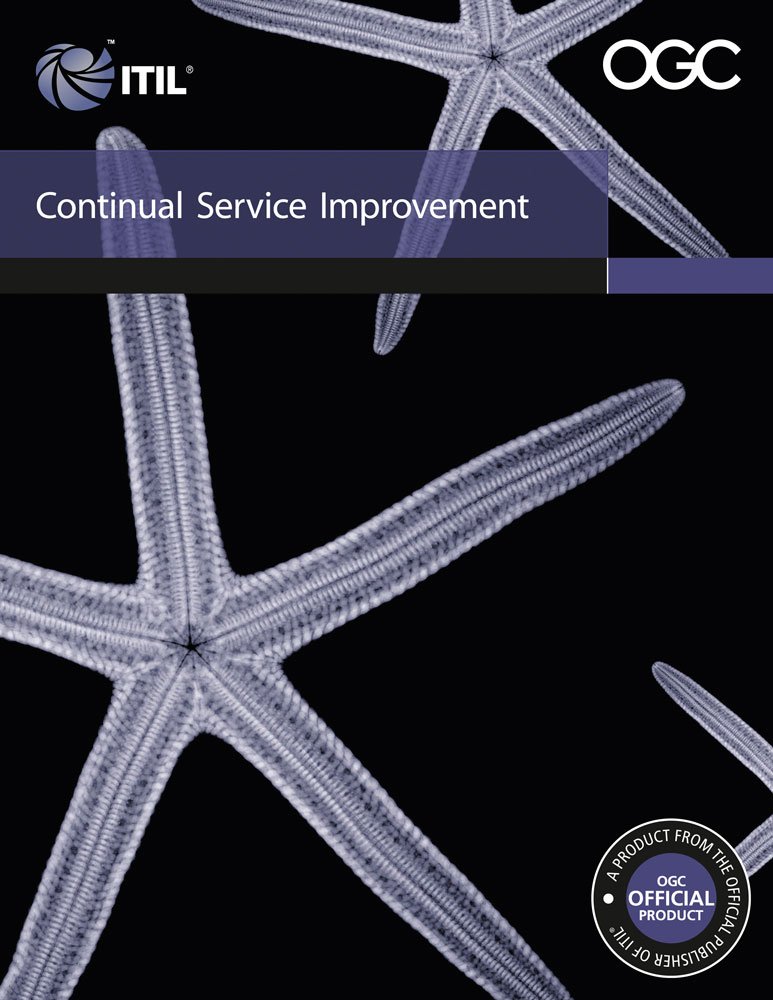ITIL® Continual Service Improvement (CSI)
You Will Learn How To:
Prepare for and pass the ITIL Continual Service Improvement (CSI) Exam.
Apply the seven-step improvement process.
Deliver CSI using proven techniques.
Organize for CSI by defining responsibilities with tools and technology.
Implement CSI while analyzing challenges, critical success factors and risks.
Workshop Activities Include:
Familiarizing yourself with terms used within the CSI phase.
Gaining insight into how CSI is embedded in ITSM.
Analyzing the seven-step improvement process.
Creating a balanced scorecard and a reporting policy template.
Allocating CSI roles and responsibilities.
Daily review sessions and CSI exam practice.
Important Course Information:
Pre-course reading required.
Approximately 1 hour of home study each evening.
Course tuition includes the ITIL Intermediate Qualification: Continual Service Improvement Certification Exam, as well as overview maps that illustrate the ITIL lifecycle stages, serving to reinforce key concepts and functioning as valuable reference tools.
The ITIL Foundation Certificate is required to attend this course and take the ITIL Certification Exam on the final day.
Who Should Attend:
This course is valuable for those who want to achieve the ITIL Intermediate Qualification: Continual Service Improvement Certificate. The ITIL Foundation Certificate is required to attend this course and to take the ITIL Intermediate Continual Service Improvement exam on the final day.
Training Hours:
Days 1 – 3 Course Hours:
8:30 a.m. – 4:00 p.m.
Four 10-minute breaks
60-minute lunch
Day 4 Course Hours – Last Day:
8:30 a.m. – 2:30 p.m.
Two 10-minute breaks
60-minute lunch
Course Exam*
1:00 p.m. – 2:30 p.m.
Course Content:
ITIL Continual Service Improvement Introduction and Overview:
Goals and scope of CSI
The purpose and objectives of CSI
Embedding CSI into organizational processes
Explaining how CSI creates business value
CSI approach:
Asking the right business questions to ensure that a CSI initiative is warranted
Illustrating the interfaces to other ITIL lifecycle stages
Principles of Continual Service Improvement:
Establishing accountability
Defining unambiguous ownership and roles
Supporting the application of CSI with the CSI register
CSI and service level management
Providing governance:
Knowledge management as a main element in any improvement initiative
Implementing and applying CSI with the Deming Cycle
Service measurement
Ensuring effective governance with CSI
Supporting CSI with frameworks, models, standards and quality systems
The Seven-Step Improvement Process:
Determining what to measure
Defining what you should measure: measurements that fully support the goals of the organization
Defining what you can measure
Conducting gap analysis to identify what can be measured
Gathering the data
Processing the data to provide end-to-end perspective on service and/or process performance
Analyzing the data: targets met, developing trends, corrective actions required, cost to fix
Presenting and using the information
Implementing corrective actions
Integrating CSI with the other lifecycle stages:
Methods and Techniques:
Activities for delivering CSI:
Performing a gap analysis
Implementing benchmarking
Designing and analyzing service measurement frameworks
Creating a return on investment
Articulating service reporting
Key metrics:
Technology metrics
Process metrics (CSFs and KPIs)
Service metrics
Initiating a SWOT analysis
Measuring benefits to the business
Supporting CSI activities:
Availability management
Capacity management
IT service continuity management
Problem management
Knowledge management
Organization and Technology Considerations:
Defining roles and responsibilities: service owner, process owner, process manager, process practitioner
Choosing organizational structures that support CSI
Specifying tool requirements for implementation success
Automated incident and problem resolution
Statistical analysis tools and business intelligence and reporting
Implementing Continual Service Improvement:
Key considerations
Analyzing where to start
Relating the role of governance
Determining the effect of organizational change
Constructing a communications strategy and plan
Implementation challenges and risks
Establishing critical success factors and KPIs
Developing risk-benefit analyses for adoption of continual service improvement

